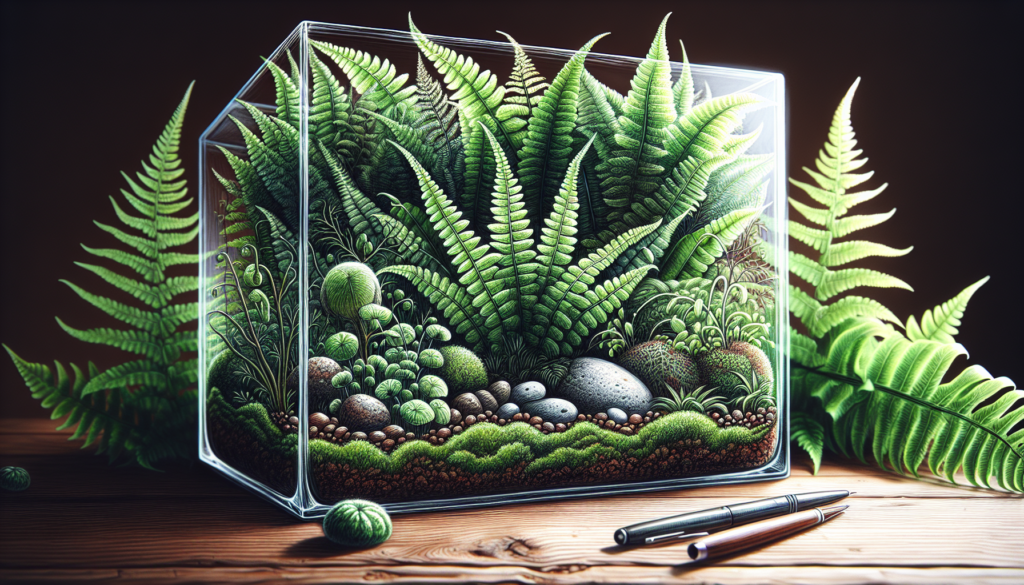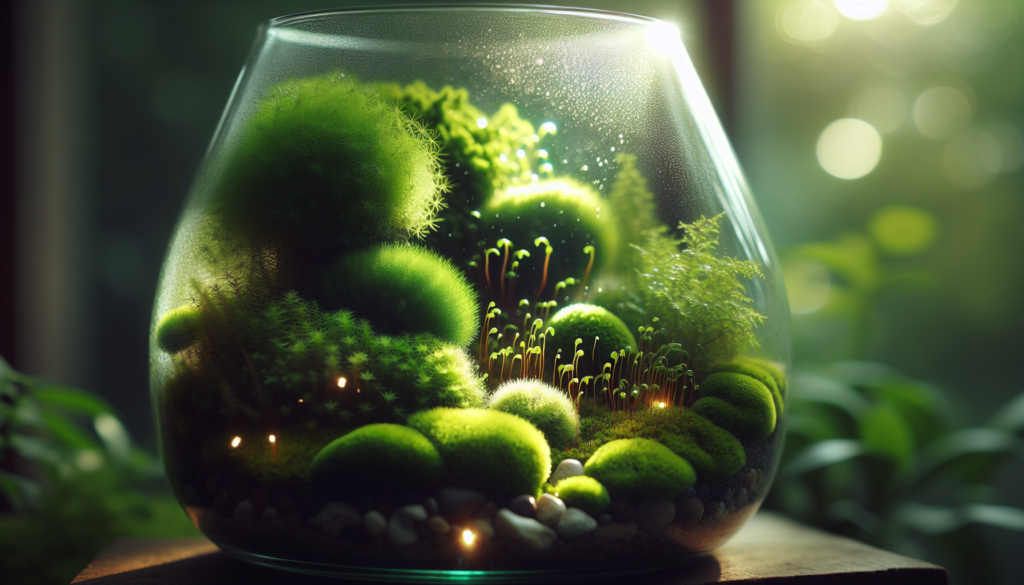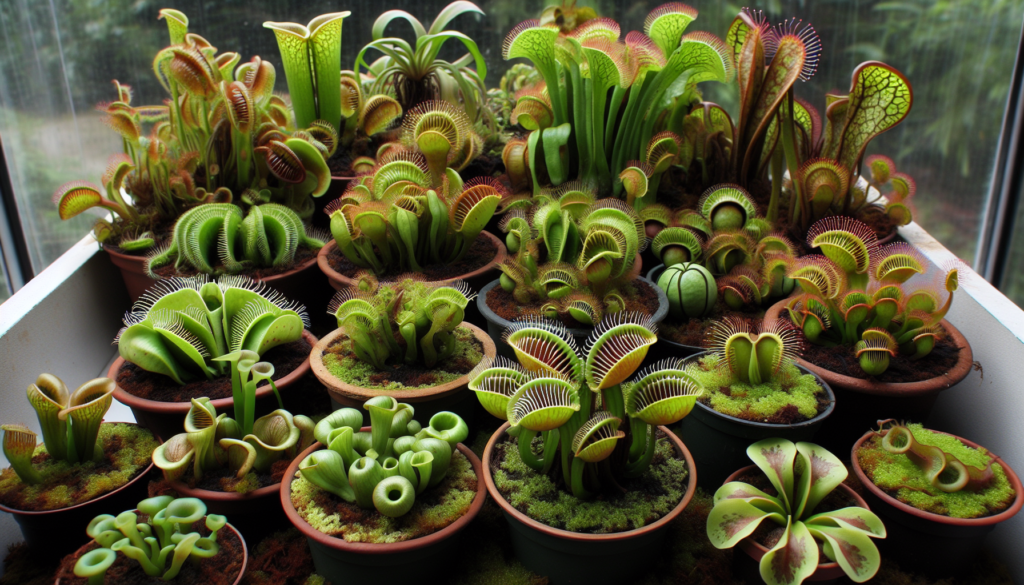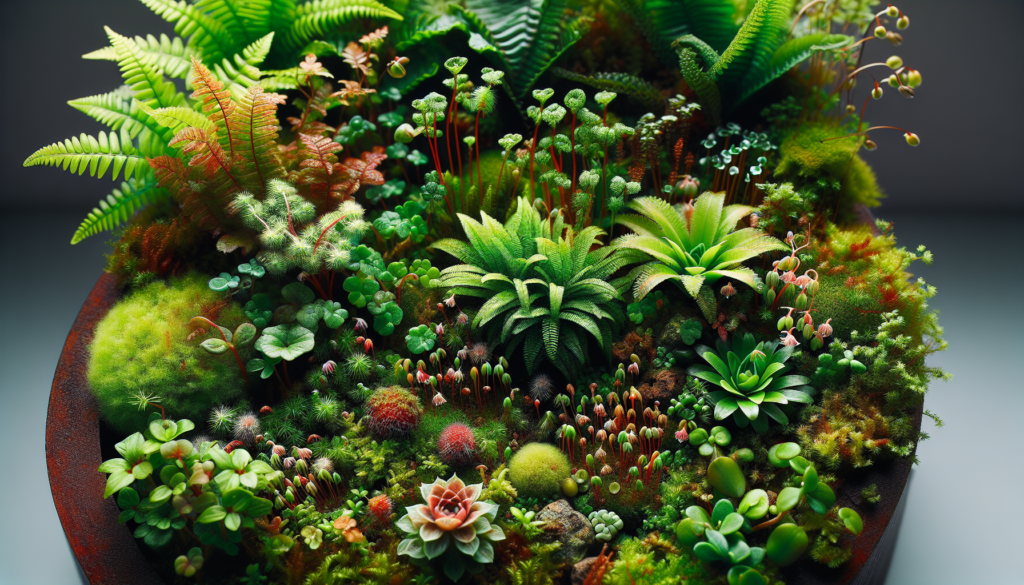Bringing a slice of nature indoors with a terrarium is a fantastic way to add a touch of green to your home. With the right plants, like ferns, you can create a tiny, self-sustaining ecosystem that’s both elegant and calming.
Why Choose Ferns for Your Terrarium?
Ferns are perfect for terrariums because they need very little sunlight and water. This makes them ideal for folks who might not have the time or energy for high-maintenance plants. Plus, they help purify the air and can have a soothing effect on your mind and body (Bantam Earth).
Ferns come in all sorts of shapes and textures, from soft and frilly to bold and dramatic. It’s rare to see a terrarium without at least one fern (Terrarium Tribe). Tropical ferns, in particular, thrive in the moist, enclosed environment of a terrarium. They’re also low-light plants, which makes them a great match for other popular terrarium plants.
Popular Ferns for Terrariums
There are many ferns that do well in terrariums. Some favorites include:
- Rabbit Foot Fern (Davallia tyermanii)
- Bird’s Nest Fern (Asplenium nidus)
- Silver Lace Fern (Pteris ensiformis)
- Crocodile Fern (Microsorum musifolium ‘crocodyllus’)
- Staghorn Fern (Platycerium spp.)
- Heart Fern (Hemionitis arifolia)
- Button Fern (Pellaea rotundifolia)
- Silver Ribbon Fern (Pteris cretica)
- Delta Maidenhair Fern (Adiantum raddianum)
- Boston Fern (Nephrolepis exaltata)
- Autumn Fern (Dryopteris erythrosora)
- Lemon Button Fern (Nephrolepis cordifolia ‘duffii’)
Mixing different types of ferns can create a visually appealing and diverse green space. Whether you like the frilly texture of a Boston Fern or the unique shape of a Staghorn Fern, there’s a fern for every taste. If you’re new to terrariums, start with easy-to-grow varieties and gradually add more exotic species as you gain confidence.
Ferns can also be paired with other plants to create a more diverse ecosystem. Check out our articles on moss for terrariums, succulent plants for terrariums, and tropical plants for terrariums for more ideas.
Creating the Ideal Environment
To keep your ferns happy, you need to get the environment just right. This means managing humidity, airflow, lighting, and watering, as well as meeting their nutritional needs.
Humidity and Airflow
Ferns love humidity, ideally around 50-60%. You can achieve this by misting them regularly. However, good airflow is crucial to prevent mold. Closed terrariums are great for ferns because they mimic their natural, moist habitats.
Lighting and Watering
Ferns don’t need much sunlight, making them perfect for low-light areas. Regular watering is essential, but be careful not to overdo it. A spray gun works well for this. Some ferns, like epiphytes, need more frequent misting due to water runoff. Avoid excess moisture to prevent root rot (British Pteridological Society).
You might need additional heat and lighting for your ferns. Ideal temperatures range from 15 to 25°C. Tubular heat bulbs, electric heating cables, or reptile heat-mats can provide the necessary warmth. LED light strips are great for lighting, and small electric fans can improve air circulation in taller terrariums.
Nutritional Needs
Ferns need nutrients, which can be provided through plant-feed pellets for bottom-planted ferns and liquid feed for climbing epiphytes. Keeping an eye on their watering and nutritional needs is key to maintaining a healthy balance of moisture.
In short, creating the perfect environment for your terrarium ferns involves balancing humidity, lighting, watering, and nutrition. By managing these factors effectively, you can enjoy a beautiful, low-maintenance green space. For more plant options, check out our articles on moss for terrariums, succulent plants for terrariums, and carnivorous plants for terrariums.
Propagating Ferns for Your Terrarium
If you want more ferns, you can propagate them through division or spore propagation. Both methods have their own benefits and challenges.
Division Method
The division method involves splitting a larger fern into smaller plants, each with a good amount of leaves and roots. This can be done by tearing or chopping the plant into smaller sections. This method is cost-effective and allows you to get more plants from a single fern.
Spore Propagation
Spore propagation involves harvesting spores from mature ferns to create new plants. Spores are typically found on the underside of fern leaves and can be collected when ripe. This method requires more patience, as growing ferns from spores can take several months. However, seeing a new fern grow from a tiny spore can be quite rewarding.
Both methods offer a way to increase the number of ferns in your terrarium. The choice depends on your preference, the type of fern you have, and your terrarium conditions. Successful propagation ensures a continuous supply of these beautiful plants for your miniature green world. For more information on other types of plants suitable for terrariums, check out our articles on moss for terrariums, succulent plants for terrariums, and tropical plants for terrariums.
Planting and Maintaining Ferns
Once you’ve chosen your ferns, the next step is planting and maintaining them to ensure they thrive.
Planting Techniques
Start by creating a layer of drainage material at the bottom of your terrarium, like pebbles or activated charcoal. Add a layer of soil on top. Place your fern in the terrarium, ensuring it has room to grow. Water the fern lightly, avoiding soaking the soil to prevent root rot. Place the terrarium in an area with indirect sunlight, as ferns prefer shady conditions.
If you’re propagating ferns, stem cuttings can be rooted in soil or rooting hormone. Once well-rooted, they can be transplanted into the terrarium (Bantam). Alternatively, larger ferns can be divided into smaller plants.
Care and Maintenance
Ferns need regular care and attention. Provide nutrition through plant-feed pellets for bottom-planted ferns and liquid feed for climbing epiphytes. Regular watering with a spray gun is essential, but avoid excess moisture to prevent rot.
Monitor the health of your ferns for signs of disease or stress, such as yellowing leaves or stunted growth. Take action immediately if you notice any issues.
By following these planting techniques and care guidelines, you can ensure your terrarium becomes a thriving miniature ecosystem. Whether you’re a beginner or a seasoned terrarium enthusiast, these tips will help you make the most of your indoor garden.
Selecting the Perfect Ferns
Choosing the right ferns is crucial for a successful terrarium. Here are some top choices and unique varieties to consider.
Best Types of Ferns for Terrariums
Some ferns stand out for their adaptability to terrarium conditions:
- Rabbit Foot Fern
- Bird’s Nest Fern
- Silver Lace Fern
- Crocodile Fern
- Staghorn Fern
- Boston Fern
Other well-suited ferns include:
- Nephrolepis Sword Ferns: Known for their sword-shaped fronds.
- Adiantum Maidenhair Ferns: Delicate ferns with frilly foliage.
- Pteris Ferns: Striking ferns with forked, linear fronds.
- Asplenium Tree Ferns: Thrive in humid terrarium conditions.
Unique Fern Varieties
For a unique touch, consider these ferns:
- Silver Ribbon Fern (Pteris cretica): Adds elegance with its silver variegation.
- Delta Maidenhair Fern (Adiantum raddianum): Delicate, feathery fronds.
- Lemon Button Fern (Nephrolepis cordifolia ‘duffii’): Compact with button-like leaflets.
- Autumn Fern (Dryopteris erythrosora): Vibrant colors changing from orange to green.
Choosing the right plants that thrive in the same conditions is key to a successful terrarium. Ferns are great due to their love for humid conditions and adaptability to different light levels. For more options, check out our articles on moss for terrariums and succulent plants for terrariums.
Enhancing Your Terrarium
Once your ferns are settled, enhance the environment with complementary plants and decorative elements.
Adding Complementary Plants
Adding other plants can provide a contrasting backdrop for your ferns and contribute to the overall health of the terrarium. Epiphytic plants are recommended for closed terrariums to avoid soil buildup on the walls. Creeping plants can provide ground cover (Monstera-App).
Mosses are another great choice, adding a natural and aesthetic element that complements the ferns. Check out our article on moss for terrariums for more information.
Decorative Elements
Decorative elements can enhance the visual appeal of your terrarium. Use tree-fern trunk pieces, gnarled logs, cork bark, and ivy stem networks to adorn the interior. These elements not only enrich the aesthetic appeal but also create microenvironments that benefit the growth of the ferns and other plants.
Enhancing a terrarium is about creating a balanced ecosystem that supports the growth and health of your plants. When done right, your terrarium can become a thriving miniature garden that brings a touch of nature into your home. For more inspiration, check out our articles on succulent plants for terrariums, carnivorous plants for terrariums, and miniature plants for terrariums.






